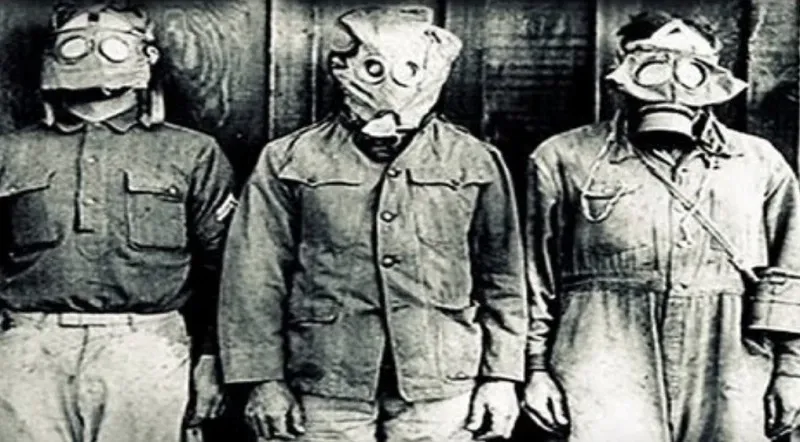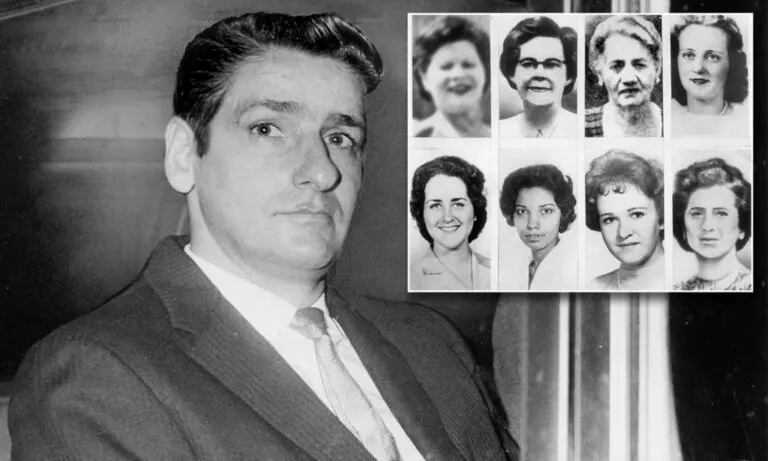The Russian Sleep Experiment
The Russian Sleep Experiment
When a human becomes a guinea pig, one of the most fascinating and disturbing creepypastas of the web is born.
In the late 1940s, some Russian scientists kept five men awake for two weeks using an experimental stimulant gas.
The subjects were confined in a hermetically sealed environment to precisely control their oxygen levels.
In fact, the gas, if inhaled in high concentrations, could have killed them.
At that time, closed-circuit cameras did not exist, so the subjects were monitored using microphones and small, thick glass windows through which observers could look into the chamber.
The chamber contained books, some bunks without blankets, running water, a bathroom, and enough dried food to sustain the five subjects for a month.
The subjects of the experiment were political prisoners considered enemies of the state during World War II.
For the first five days, everything went well; the subjects did not complain as they had been (falsely) promised that they would be released if they completed the test without sleeping for thirty days.
Their conversations and activities were monitored, and the scientists noticed that the subjects began discussing increasingly dramatic incidents from their past. After the fourth day, the general tone of their conversations became increasingly sad and melancholic.
The Situation Begins to Collapse
After five days, the subjects began to regret the circumstances and events that had led them to be confined in that place and started exhibiting severe paranoia.
Suddenly, they stopped talking to each other and began, one by one, to whisper into the microphones and through the small glass windows.
Strangely, it seemed that all the subjects believed they could convince the scientists that they were better than their fellow captives.
Initially, the scientists assumed this was a side effect of the gas…
After nine days, one of them begins to scream.
He runs around the chamber, continuing to scream at the top of his lungs for three hours straight.
When he is no longer able to scream, he continues to emit sporadic guttural noises.
The scientists hypothesize that he has torn his vocal cords.
The most surprising thing about this episode was seeing how the other subjects reacted… or rather, how they did not react.
Indeed, they continued to whisper into the microphones until another prisoner began to scream.
Two subjects remained silent, took the books, smeared them, page by page, with their feces, and then, calmly, pasted them over the small windows.
The screaming ceased immediately.
Even the whispering into the microphones stopped.
Three more days pass.
The scientists periodically check that the microphones are still functioning, as they find it impossible that no sound is coming from the chamber anymore.
However, the oxygen consumption indicates that all five subjects are still alive.
Specifically, they are consuming a high level of oxygen as if they were under stress.
On the morning of the fourteenth day, the scientists do something that, according to protocol, they should not have done, hoping to get some reaction from the subjects.
They use the intercom installed inside the chamber to send a message to the prisoners, fearing they might be dead or in a coma.
The scientists announced: “We will open the chamber to repair the microphones.
Step away from the doors and lie down on the floor or we will shoot you.
If you cooperate, one of you will be released immediately.”
To their astonishment, the scientists heard a single phrase in response, spoken calmly:
“We don’t want to be released anymore.”
Following this event, a heated debate arose between the scientists and the military body funding the research.
In the end, since they could not obtain further responses using the intercom, they decided to open the chamber at midnight on the fifteenth day.
The chamber was cleared of the stimulant gas and filled with fresh air, and immediately, voices began to complain through the microphones.
Three of them began to beg for the gas to be turned on again, as if the lives of their loved ones were at stake.
The chamber was opened, and soldiers were sent in to retrieve the experiment’s subjects.
They began to scream louder than ever, and the same did the soldiers when they saw what was inside the chamber.
Four of the five subjects were still alive… provided that anyone could define “alive” the state in which those people were.
The food rations for the last five days had not been touched.
Pieces of flesh from the thighs and torso of the deceased subject had been stuffed into the central drain pipe of the chamber to block the sewer, and ten centimeters of water covered the floor.
It was never determined with certainty how much of that liquid was actually water and how much was blood.
The survivors of the experiment had large portions of muscle ripped from their bodies.
The state of the exposed flesh and bones on their fingers indicates that the wounds were inflicted with bare hands, not with teeth as initially thought.
Upon closer examination of the angles of the wounds, it is discovered that most, if not all, of the injuries were self-inflicted.
The abdominal organs beneath the ribcages of all four subjects were removed.
While the heart, lungs, and diaphragm were still in place, the skin and most of the muscles attached to the ribs were torn away, exposing the ribcage bones.
All the veins and organs remained intact; the subjects had simply pulled them out of their bodies and laid them on the ground, fanned out but still functioning.
The digestive tracts of all four were seen working, digesting food.
It quickly became clear that what they were digesting was their own flesh that they had torn off and eaten over the past few days.
The majority of the soldiers were part of the special forces of the facility, but despite this, they refused to return to the chamber to retrieve the prisoners.
The subjects continued to scream to be left in the chamber and begged for the gas to be turned on again, saying they were afraid of falling asleep…
To everyone’s great surprise, the subjects put up a fierce resistance when the soldiers tried to remove them from the chamber.
One of the Russian soldiers died with his throat slashed, while another was severely injured when his testicles were ripped off and an artery in his leg was lacerated by one of the prisoners’ teeth.
In total, five soldiers lost their lives, including those who committed suicide in the weeks following the incident.
During the struggle, one of the four surviving subjects perforated his spleen and began to bleed profusely.
The medical team tried to sedate him but found it impossible.
He was injected with a quantity of morphine ten times the normal human dose, and he still writhed like a mad animal, managing to break a rib and the arm of one of the doctors.
Even though more air than blood remained in his vascular system, his heart continued to beat for another two minutes.
Even when his heart stopped, the subject continued to scream and thrash for another three minutes, attacking anyone within reach and repeating the word “AGAIN” endlessly, increasingly weakly, until finally falling silent.
The three remaining prisoners were severely injured and were transported to the medical center.
The two with intact vocal cords continued to beg for the gas to be turned back on and to keep them awake…
The one in the worst condition was taken to the only operating room the facility had available.
As they proceeded to put the organs back inside his body, the doctors discovered that the subject was immune to the sedatives administered before the operation.
When the anesthetic gas mask was brought near his mouth, the prisoner struggled to free himself from the restraints.
Despite a ninety-kilogram soldier holding his wrists, the subject managed to almost completely tear the leather straps around his arms.
It took a dose of anesthetic slightly higher than normal to sedate him, and the moment his eyelids drooped and closed, his heart stopped beating.
The second subject brought to the operating room was the first to start screaming.
His vocal cords were destroyed and thus he was unable to plead or resist the procedure.
As soon as the anesthetic gas mask was brought to his mouth, his only reaction was to violently shake his head in disapproval.
Someone, reluctantly, suggested proceeding with the operation without anesthetics, and the subject signaled in agreement.
The procedure lasted six hours, with the doctors repositioning his abdominal organs and trying to cover them with what remained of his skin.
The chief surgeon repeatedly stated that it was medically possible for the patient to survive.
A terrified nurse who witnessed the operation claimed she saw the patient’s mouth curve into a smile every time she looked him in the eyes.
After the operation, the subject looked at the surgeon and began to rasp, straining to speak.
Believing it to be of great importance, the surgeon had a sheet of paper and a pen brought so that the patient could write his message.
He simply wrote: “Keep cutting.”
The last prisoner underwent the same procedure, also without anesthetics, although a paralytic was injected.
The surgeon found it impossible to proceed with the operation otherwise because the patient continued to laugh.
Once paralyzed, the subject could only follow the movements of the doctors around him with his eyes.
However, the effect of the paralytic wore off after a short time, and the subject immediately resumed thrashing and begging for the stimulant gas.
The scientists tried to ask him why he had inflicted those wounds on himself and why he kept asking for the gas.
The only response they received was: “I had to stay awake.”
Subsequently, the two surviving prisoners were bound and returned to the chamber, awaiting a decision on what to do with them.
The doctors had to endure the wrath of their “military benefactors” for not achieving the results they were required to, and proposed euthanizing the surviving prisoners.
However, the commanding officer, an ex-KGB operative, saw potential in the experiment and expressed a desire to see what would happen if the gas emission were turned back on.
The medical staff strongly opposed but was overridden.
Before the chamber was resealed, the subjects were connected to an EEG and restrained with padded containment straps.
After the first prisoner was hooked up to the machinery, the scientists watched his brainwaves with surprise.
They remained at normal levels for most of the time, then inexplicably plummeted.
It seemed that the subject’s brain repeatedly suffered from brain death, only to return to normal activity.
The other subject, the one who could still speak, began to scream to seal the chamber immediately.
His brainwaves showed the same abnormal patterns as the other prisoner.
The officer gave the order to seal the chamber immediately, even though three scientists were still inside.
One of them pulled out a gun and shot the commander right between the eyes before he could close the door.
Then he turned the weapon on the mute subject and blew his brains out.
At that point, he aimed the gun at the last surviving subject who was strapped to the gurney, while the other scientists fled the chamber.
“I won’t stay in here with those things! Not with you!” the scientist shouted. “WHAT ARE YOU REALLY?” he demanded. “I need to know!”
The subject smiled.
“You forgot so easily?” the subject replied. “We are you. We are the madness lurking within all of you, begging every moment to be released from your wildest subconscious.”
We are what you hide from at night, when you go to bed.
“The ones you silence and paralyze every time you retreat into that sleep we cannot tread upon.”
The scientist watched him for a few seconds, motionless.
Then he aimed at the subject’s heart and fired.
As the EEG line flattened, the subject, with a strangled voice, said: “I was… almost… free”
THE RUSSIAN SLEEP EXPERIMENT is now a world-famous urban legend.
Many even firmly believe there might be a grain of truth to it…
What do you think?
 Subscribe to our YouTube channel
Subscribe to our YouTube channel





